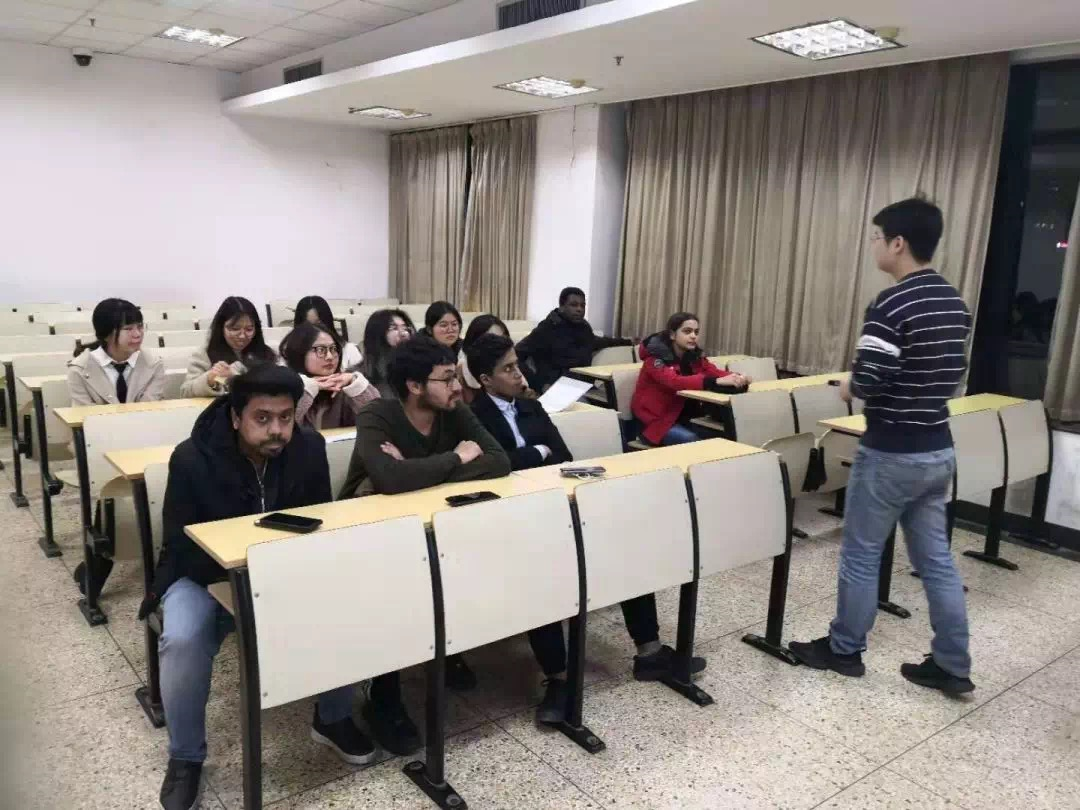当我们提到“质量”,你的脑子里会想到什么?是已经成为传说的“诺基亚砖头机”?还是从四楼扔下来还能继续使用的iphone4?其实我们对质量的概念只是从感觉出发,我们对产品质量好坏的定义也是基于自己对产品的使用感。
When we talk about "quality", what will come to your mind? Is it Nokia or iphone4 that can still be used after being dropped from the fourth floor? In fact, our concept of quality is only based on feelings. Our definition of product quality is also based on our sense of use of the product.
为了帮助同学们从专业角度学习质量管理,12月11日晚6:30,受物流管理与工程系李修琳老师的邀请,博世电动工具(中国)有限公司物流战略计划经理谭璞来到《生产与运作管理》的课堂,与物流管理专业的中外同学们就"质量管理在供应链中的应用"展开了一次交流。
To help students learn quality management from a professional perspective, at 6:30 pm on December 11, at the invitation of professor Li Xiulin from the Department of Logistics Management and Engineering, Tan Pu, the logistics strategic plan manager of Bosch Power Tools (China) Co., Ltd., came to Production and Operations Management class, and gave a lecture on Quality Management in Supply Chain to Chinese and international students majoring in logistics management.
课上谭老师给同学们介绍了6 sigma管理策略。谭老师说到,质量管理的目标就是减少缺陷,因为产品缺陷给公司企业带来的损失是巨大的。产品的缺陷在直观上造成成本浪费和利润损失,还对企业的声誉造成影响。所以,“0缺陷”就是质量管理要实现的目标,也是6 sigma要实现的目标。
Tan introduced 6 sigma management strategy to the students during the class. He said that the goal of quality management is to reduce defects, because the losses caused by product defects to the company are huge. Defects in the product intuitively cause cost waste and loss of profit, and also affect the reputation of the company. Therefore, "zero defect" is the goal to be achieved by quality management, and also the goal to be achieved by 6 sigma.
6 sigma主要有两个过程,DMAIC和DMADV,这两个过程分别针对当前低于6 sigma规格的项目和达到6 sigma规格的项目。谭老师向同学们着重介绍了DMAIC的过程。DMAIC,即D(define)定义,M(measure)度量,A(analyze)分析,I(improve)改善,C(control)控制,这五个环节构成一个流程环,帮助产品提高质量,实现“0缺陷”的目标。
6 sigma mainly has two processes, DMAIC and DMADV. These two processes are respectively for projects that are currently below the 6 sigma specification and projects that reach the 6 sigma specification. Tan introduced the process of DMAIC to the students in detail. DMAIC, namely D (define), M (measure), A (analyze), I (improve), C (control), these five links form a process loop to help products improve quality and achieve "zero defect".
在课上,谭老师将简单的折纸飞机模拟成产品的制造过程,向同学们解释什么是6 sigma策略下的质量管理。他从同学们中抽出两个同学当质量检测员,剩下的同学是纸飞机的生产者。质检员的工作是严格检查每一架纸飞机,在纸飞机每一处觉得不满意、不达标的地方做上记号,记为一处缺陷。而生产者们的工作就是在两分钟内折3架纸飞机。
In class, Tan simulated making paper plane into a product manufacturing process and explained to the students what is the quality management under the 6 sigma strategy. He chose two students as quality inspectors, and the remaining students were producers of paper planes. The quality inspector's job is to strictly inspect each paper airplane, and mark each place where the paper plane is unsatisfactory and substandard, and mark it as a defect. The producer's job is to fold three paper planes in two minutes.
在第一次的生产中,34架纸飞机有25处机翼问题,24处机尾问题。在谭老师的指导下,同学们借助鱼骨图,分析出现问题的原因,采用流水线的团队分工协作方式进行第二次生产。这次的缺陷率明显比第一次降低许多,生产的10架纸飞机中,只有5处机翼问题和3处机身问题。这就是6 sigma策略下的质量管理。
In the first production, 34 paper planes had 25 wing problems and 24 tail problems. Under the guidance of Tan, the students used the fishbone diagram to analyze the cause of the problem, and adopted a team-based division of labor and collaboration to carry out the second production. This time the defect rate is significantly lower than the first time. Of the 10 paper airplanes produced, there are only 5 wing problems and 3 fuselage problems. This is the quality management under the 6 sigma strategy.
通过这次课程,同学们不仅学习到了质量管理策略上的6 sigma方法,还对现阶段企业的供应链管理策略有了一定的了解。并且中外学生一起上课,在感受知识魅力的同时,也体验到不同国家学生之间的上课风格,促进了中外学生在学业上的交流。
Through this class, the students not only learned the 6 sigma method of quality management strategy, but also had a certain understanding of the supply chain management strategy of enterprises. What's more, Chinese and international students attended class together to experience the charm of knowledge together, and to experience different class atmosphere with students from different countries, which promotes academic exchanges between Chinese and international students.


